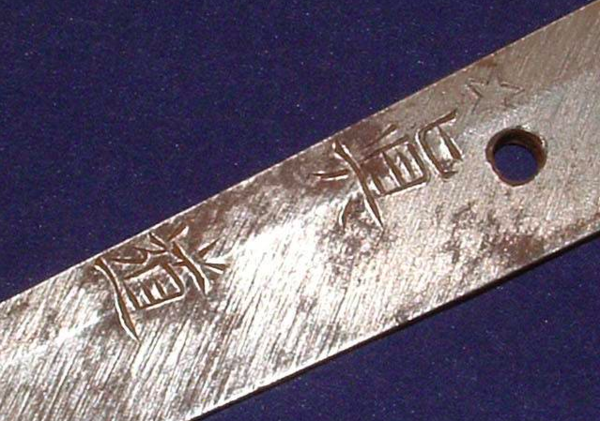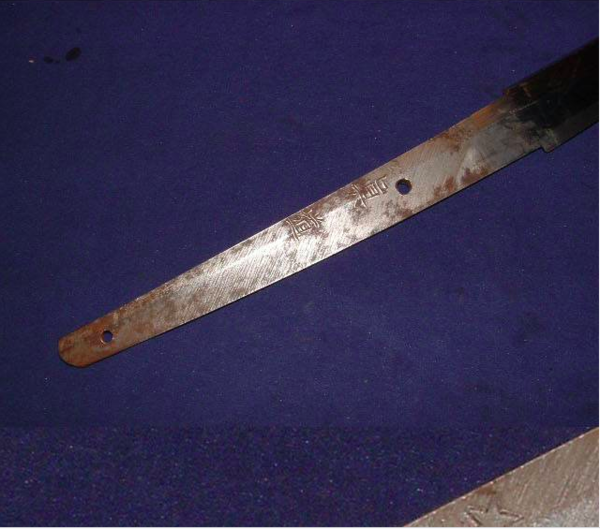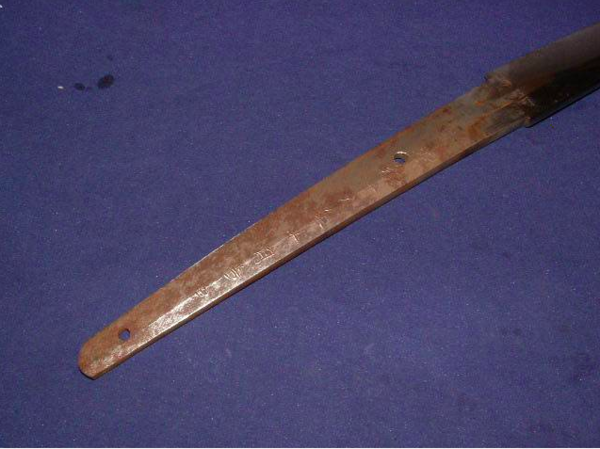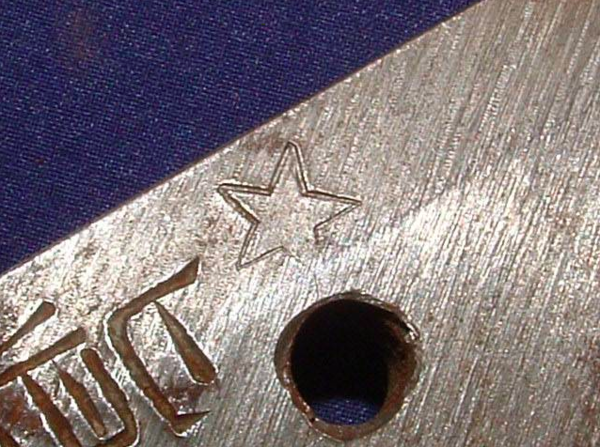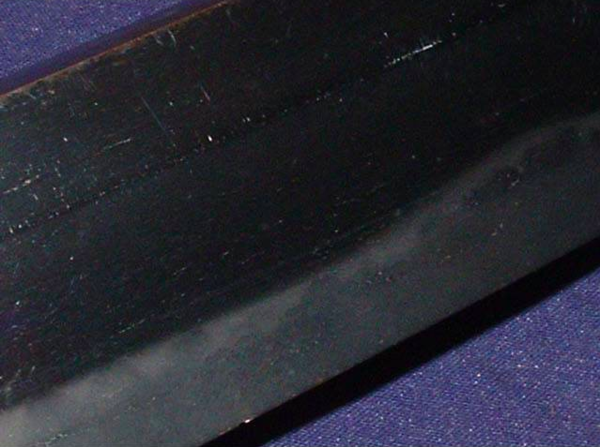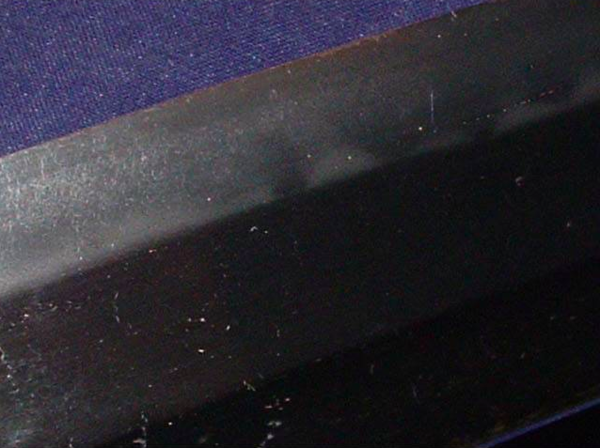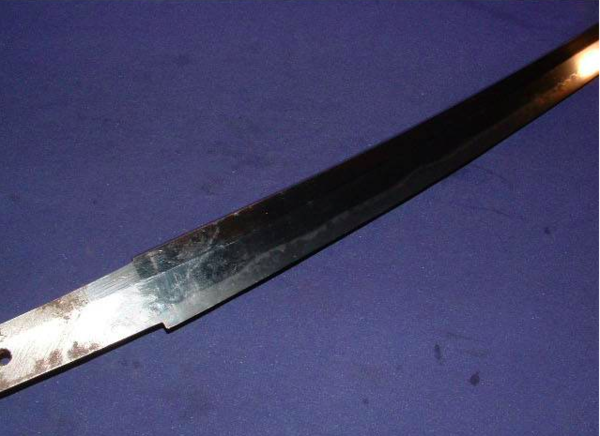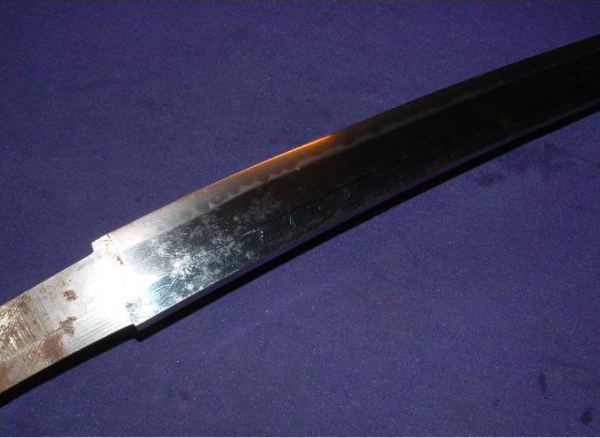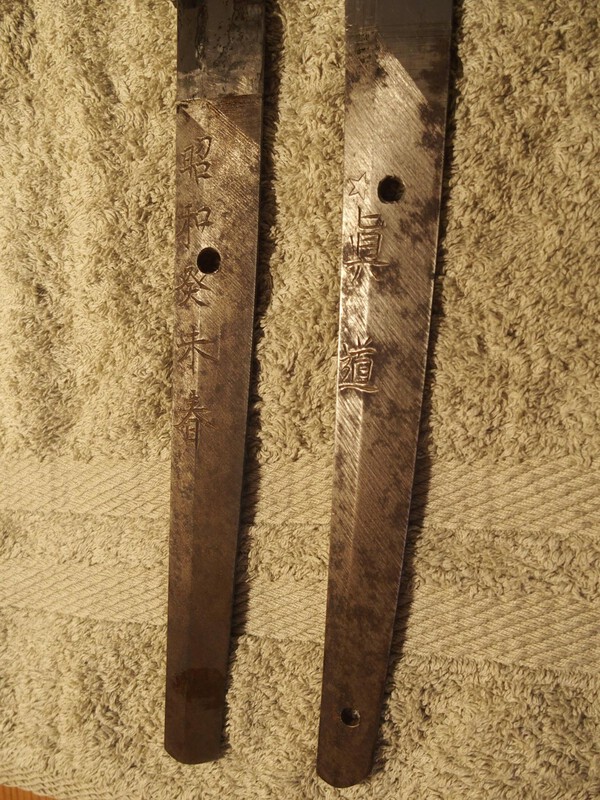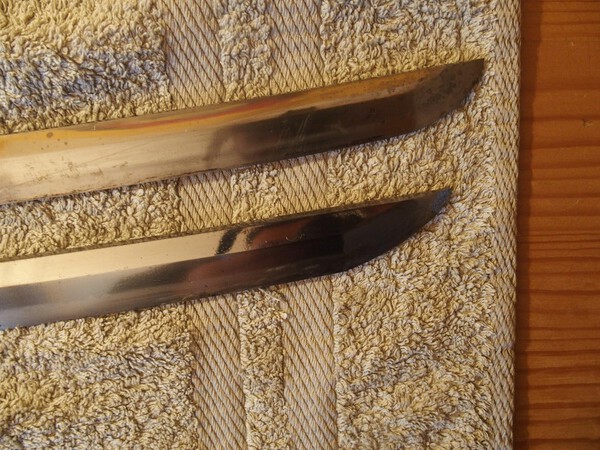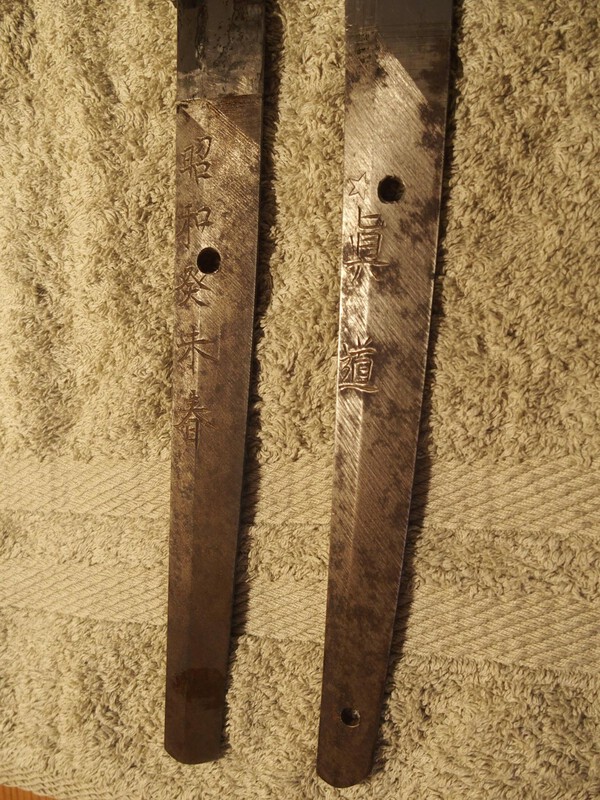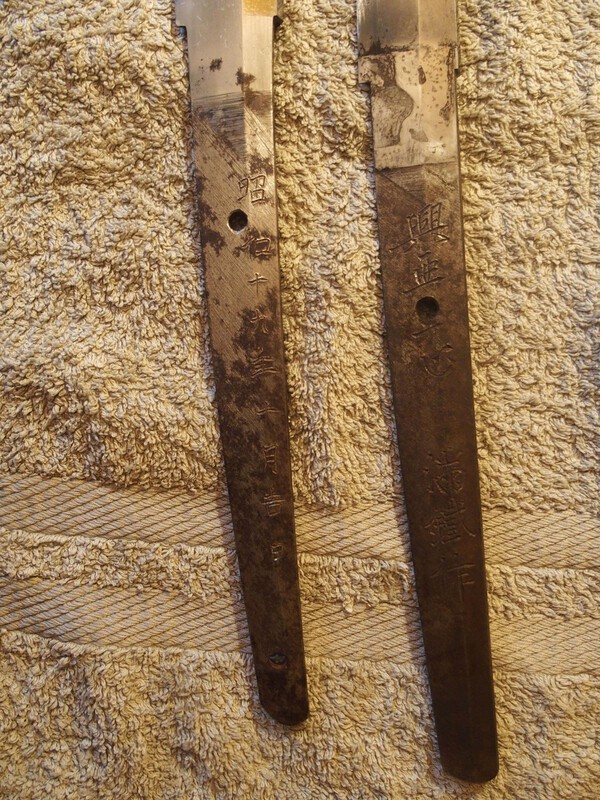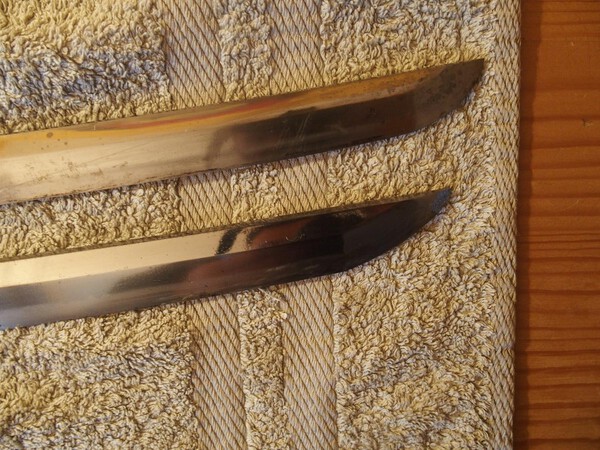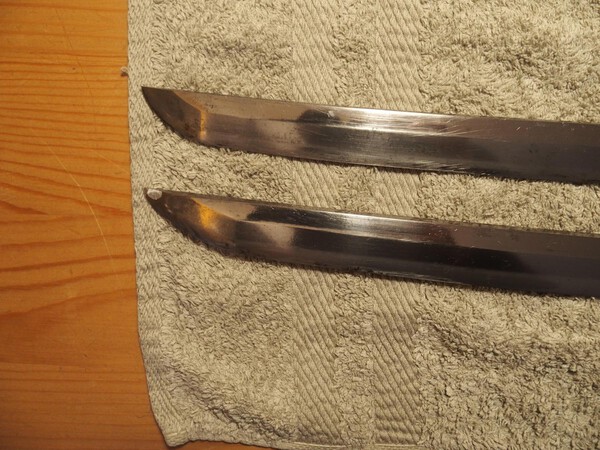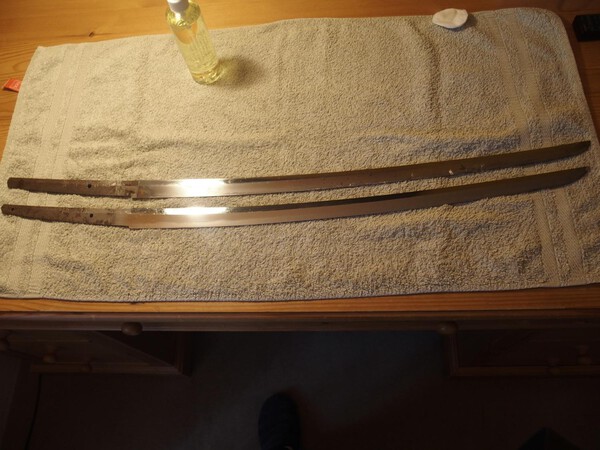-
Posts
1,151 -
Joined
-
Last visited
Content Type
Profiles
Forums
Events
Store
Downloads
Gallery
Everything posted by Bruno
-
Interesting. I'd like to get one someday. Those original WW2 wakizashi are pretty scarce.
-
Usual Gunto have a 66/67 cm nagasa, so short gunto won't be very much less long since under 61 cm, it would be a wakizashi. I have seen several about 62 cm and I think a short 61 cm star stamped Nakata Kanehide belonging to George Trotter. WW2 wakizashi are very rare BTW (not older wakizashi in Gunto koshirae, real WW2 made wakizashi).
-

Attention Mantetsu Owners: A Survey
Bruno replied to Bruce Pennington's topic in Military Swords of Japan
Another one with a "Mint" koshirae ... -
This one I get recently has no high end koshirae nor is in great polish but the blade itself is of very good quality. It is signed Sanemichi which is thought to be an art name for Tanabe Kuniyoshi, student of Kato Masakuni, a quite rare sword by this smith.
-

Attention Mantetsu Owners: A Survey
Bruno replied to Bruce Pennington's topic in Military Swords of Japan
BTW, how do you know yours has been polished in Tokyo? IN general, how one can tell a blade has been finished or made in Tokyo rather than in Manchuria? In Slough book, it is said that the best examples were made and finished in Tokyo. -

Attention Mantetsu Owners: A Survey
Bruno replied to Bruce Pennington's topic in Military Swords of Japan
Hi JP, Yes maybe. Though I based my conclusion mainly on the nakago finish. To me if a part of the sword that is not supposed to be seen (nakago) is very well finished, then one can expect the visible part (the blade) would be at least as good as the nakago or even better. On the pre 1943 Mantestu-to I have seen online, the nakago were of course of quality but maybe not as well as the 1943 ones. Once again, it is only my observation. -

Attention Mantetsu Owners: A Survey
Bruno replied to Bruce Pennington's topic in Military Swords of Japan
Hi guys, It is just my opinion, but after viewing many Mantestu-to online plus mine in hands, I believe I noticed that those made in 1943 are slightly better made and finished than those made in the previous years, especially those made in 1942. Of course there are always exception and I am sure there are top exemples from 1938 to 1942. I don't recall having seen some made in 1944 or even 1945. What do you think? -
Steve, Here is the link: http://ohmura-study.net/792.html The bottom os the scabbard is also black.
-
Yes Steve, I agree with you. The guy knows how to attract naive buyers and make more money. It is quite easy to spot the acid treatment but guessing he also duffing the whole koshirae is another story. About the Type 95, there is one quite similar on Ohmura's website which top of the scabbard is black but the rest is green. Did you see it?
-
There is little doubt this seller is doctoring these swords up, not only this NCO. I have compared the Type 98 he had for sale for weeks, and I am pretty sure he is using a technique to re-paint scabbards then add artificial aging on them. Same for the fittings on which he seems to apply a "new old" patina on. Plus of course, but that's ok, new tsukamaki. Compared to the Type 98 other sellers have, his are most of the time close to new condition. I won't bit a dead horse mentioning the acid treatment on blades that we are all aware of.
-
Or a sales technique!
-
Thanks Bruce! Yes this crafts of making perfect saya that do not touch the blade is hard to come by even nowadays. I found these Takayama-to quite interesting in terms of swords improvements. Not particularly elegant but would not be against owning a well finished one. Some have interesting patriotic slogan on the nakago. Though I find strange many were signed also by the polisher, since the polish won't last long compared to the mei which will stay forever.
-
Hi Bruce, Once Chris B. told me that even in shirasaya it is not rare that the blade is in contact with the wood. It seems to require quite an amount of skills and time to make a wood liner or saya that perfectly fits the blade. So I guess for many swords in Gunto koshirae plus the war context did not help to make them perfect. BTW, do you have photos of your Takayama-to? Thanks
-
Type 98 were manufactured til the end of war, Type 3 did not replace Type 98. They just manufactured Type 3 from 1943 till 1945.
-
Thanks for the replies guys. Yes though I am no metallurgist from what I read it is not possible to obtain a hamon with these blades, but at the same time it is said Fujiwara Kanenaga did it, so... I found some Tenzoshan blades pretty well finished for showa-to, and one with a good level if finish (nakago and polish), real hamon and signed by the smith, would make a nice addition to any collection. Even if I am personally versed in gendai-to, I would not be against owning like like that.
-
Hi guys, Trying to gather some reliable infos about hamon and forging method of Navy showa-to made with anti-rust steel at the Tenshozan Tarenjo. From what I have read and saw, the swords made at the Tenshozan Tarenjo seems of better quality than those made at he Toyokama arsenal. Early ones are of course usually better. Most I have seen online (never handle any of them) look to have no hamon anymore once "cleaned", and etched/stoned on hamon when in their original polish. It is written that smith and metalurgist Fujiwara Kanenaga was able to obtain a real hamon. Is it confirmed or more a rumor? If true, are we talking about oil quenched or water quenched hamon in his case? Was he the only smith able to do that? I read also that words made at the Tenshozan tarenjo were made by several Seki showa-to smiths, then shipped to the Tenshozan tarenjo to have the final polish and inscriptions/stamp. Is it correct? Finally, are they sunobe-to or do they have a core steel like Mantetsu-to? Thanks for the help
-

Looking for any infos about WW2 smith Tanabe Kuniyioshi
Bruno replied to Bruno's topic in Military Swords of Japan
Hi David, Thanks for the reply. Recently Chris sent me a file version of his book. He did not add Sanemichi in it as he is still not 100% sure he was connected to the Kato clan, or if he was Tanabe Kuniyoshi. -
Hi Chris, Are you confident that (some of) these anti-rust swords do have real (oil quenched) hamon? I am trying to find out if yes or no. As far as I remember, on Ohmura's page it is said that only Fujiwara Kanenaga was able to produce a real hamon on these blades. Chris Bowen, wrote all the ones he saw had apparently etched/stoned on hamon. I am quite interested in learning more about that particular point. I am thinking maybe someday buying a nice exemplary but only if it has a real hamon. Thanks
-

Looking for any infos about WW2 smith Tanabe Kuniyioshi
Bruno replied to Bruno's topic in Military Swords of Japan
Thanks a lot George! My Japanese skills are still too low to read it but I will forward it to a guy that can do it. -
It's a shame (most of) all these stainless steel showa-to have so poorly done yasurime. Even done by a smith like Fujiwara Kanenaga who was able to produce real hamon with this steel, he did not pay attention or maybe was not able to do neat yasurime.
-

Looking for any infos about WW2 smith Tanabe Kuniyioshi
Bruno replied to Bruno's topic in Military Swords of Japan
Hi George sama! Long time no talk you and me! Here is attached a pic of the ranking of Tanabe Kuniyoshi. You can find it on Rich Stein's great website. It has been said that Tanabe Kuniyoshi could have signed some of his late and/or military swords by using the name Sanemichi. Tanabe Kuniyoshi was a student of the Kato smiths (please see attached oshigata) and the SANE of Sanemichi looks the same than the one on Sane/Masakuni, so it is thought Sanemichi and Kuniyoshi were maybe be the same person. Sanemichi cannot be found among the RJT list as he probably entered the program in 1944 so too late to be recorded. Just a guess. I bought the star stamped Sanemichi because it was a steal and also because I thought (without being sure) that he was connected in some sort to the Kato clan, and I am a fan of the Kato work. Regards Oshigata of a gassaku sword made by Kato Masakuni and his student, Tanabe Kuniyoshi-converti-converti.pdf -
Hello, I am re-posting here. I am looking for any infos (oshigata, photos of blades, nakago, backgroung...) about this smith who signed Sanemichi. There is already an old post here from 2013 mentioning him. He (Tanabe Kuniyoshi) was ranked chujo saku in the Tosho Banzuke, 1942. I am trying to find out if Tanabe Kuniyoshi and the RJT smith Sanemichi were the same person. Also, was he a student of the Tokyo Kato smiths? Infos about him seem quite scarce or inexistant so I am looking for help here. Thanks in advance Here are a few pics (along with a Mantetsu-to...).
-

Looking for any infos about WW2 smith Tanabe Kuniyioshi
Bruno replied to Bruno's topic in Military Swords of Japan
Hi Bruce, OK I will re-post on the Nihonto forum soon. Regards -

Looking for any infos about WW2 smith Tanabe Kuniyioshi
Bruno replied to Bruno's topic in Military Swords of Japan
OK, so the second sword is well a Mantetstu-to that I pictured with the Sanemichi, just to compare. Yes Bruce, you have already the date, mei and serial number of this Mantetsu-to. The star stamped sword is signed Sanemichi but I suspect he is in fact Tanabe Kuniyoshi using a different name. -

Looking for any infos about WW2 smith Tanabe Kuniyioshi
Bruno replied to Bruno's topic in Military Swords of Japan



